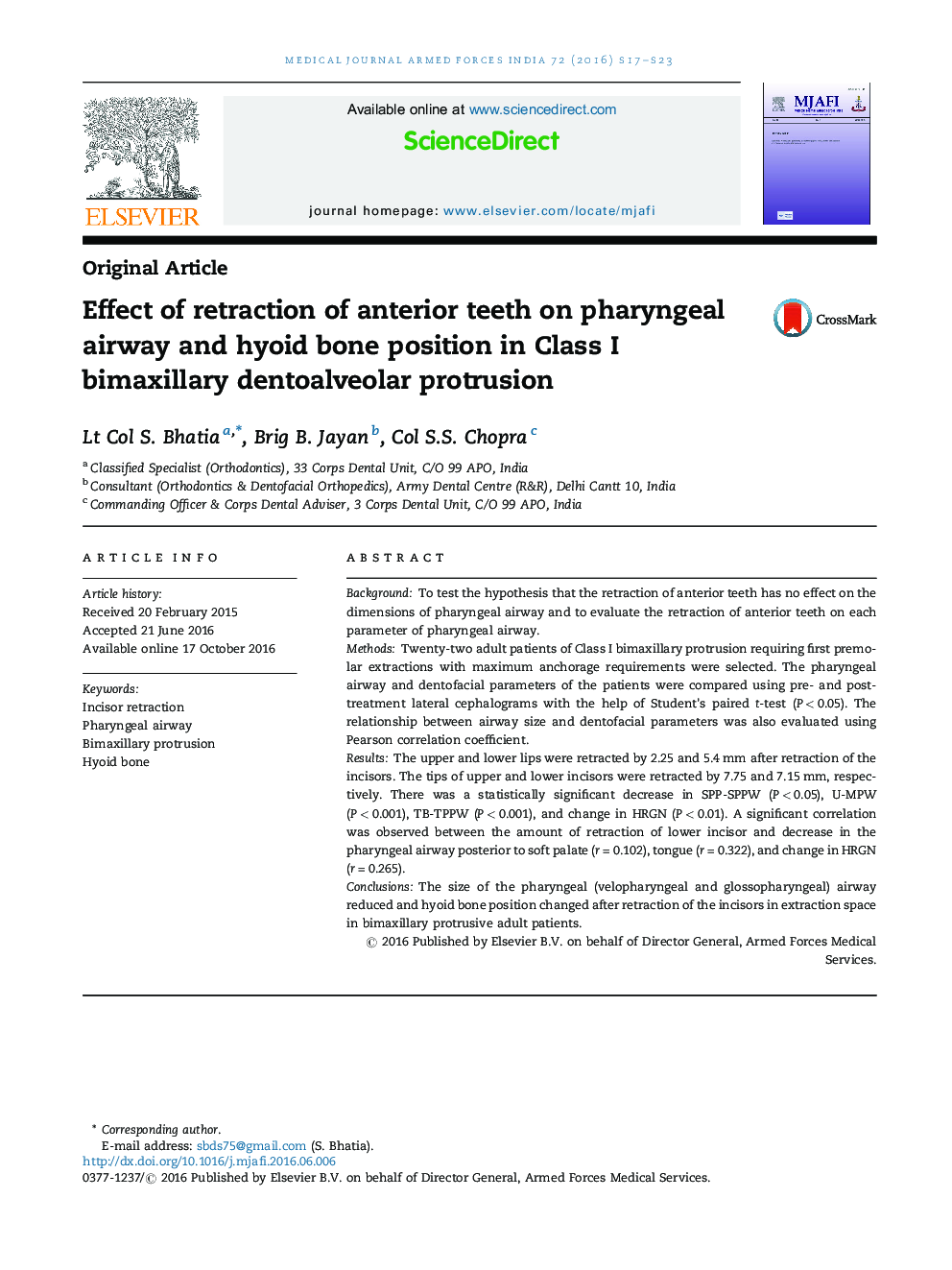| Article ID | Journal | Published Year | Pages | File Type |
|---|---|---|---|---|
| 5642266 | Medical Journal Armed Forces India | 2016 | 7 Pages |
BackgroundTo test the hypothesis that the retraction of anterior teeth has no effect on the dimensions of pharyngeal airway and to evaluate the retraction of anterior teeth on each parameter of pharyngeal airway.MethodsTwenty-two adult patients of Class I bimaxillary protrusion requiring first premolar extractions with maximum anchorage requirements were selected. The pharyngeal airway and dentofacial parameters of the patients were compared using pre- and post-treatment lateral cephalograms with the help of Student's paired t-test (P < 0.05). The relationship between airway size and dentofacial parameters was also evaluated using Pearson correlation coefficient.ResultsThe upper and lower lips were retracted by 2.25 and 5.4 mm after retraction of the incisors. The tips of upper and lower incisors were retracted by 7.75 and 7.15 mm, respectively. There was a statistically significant decrease in SPP-SPPW (P < 0.05), U-MPW (P < 0.001), TB-TPPW (P < 0.001), and change in HRGN (P < 0.01). A significant correlation was observed between the amount of retraction of lower incisor and decrease in the pharyngeal airway posterior to soft palate (r = 0.102), tongue (r = 0.322), and change in HRGN (r = 0.265).ConclusionsThe size of the pharyngeal (velopharyngeal and glossopharyngeal) airway reduced and hyoid bone position changed after retraction of the incisors in extraction space in bimaxillary protrusive adult patients.
